Experiment Design
1/18
Earn XP
Description and Tags
CH1 Sec: 1
Name | Mastery | Learn | Test | Matching | Spaced |
|---|
No study sessions yet.
19 Terms
Controlled Experiment
purposeful manipulation, contains an independent variable
Observational study
collecting data, no intervening
Dependent Variable
measuring this, expected to see change. Present in both experiments
On y-axis (up/down)
Independent variable
is purposefully manipulated. Makes the study = experiment.
On x-axis (sideways)
Standardized Variable
conditions that stay the same for both groups
Control Group
group considered “normal“. In both experiments
Experimental Group
recieves independent variable, aka treatment group
Correlation
2 groups of measurement are related to one another by chance
Causation
not random, proves that by adding independent variable the dependent variable will change
A research company is testing a new chemotherapeutic drug (also known as “chemo”, this is a drug used to treat cancer). When the new drug is given to mice with tumors, the cancerous cells stop dividing and begin to shrivel up and die. To determine if this drug would also be effective for humans, the researchers are using what’s called a human cell line- these are cancerous cells that can be grown in a lab outside of the human body. They take the human cells and divide them into two separate dishes, placing 100 cells into each dish. In the first dish, they add the new drug; while, in the second dish they do not add anything. Both sets of dishes are placed into the body temperature room, have the same amount of water and food. After 36 hours the researchers check the dishes and they count the number of cells. They find that the first dish has 55 living cells and the second dish has about 1000 cells.
What is the dependent variable?
number of cells produced
A research company is testing a new chemotherapeutic drug (also known as “chemo”, this is a drug used to treat cancer). When the new drug is given to mice with tumors, the cancerous cells stop dividing and begin to shrivel up and die. To determine if this drug would also be effective for humans, the researchers are using what’s called a human cell line- these are cancerous cells that can be grown in a lab outside of the human body. They take the human cells and divide them into two separate dishes, placing 100 cells into each dish. In the first dish, they add the new drug; while, in the second dish they do not add anything. Both sets of dishes are placed into the body temperature room, have the same amount of water and food. After 36 hours the researchers check the dishes and they count the number of cells. They find that the first dish has 55 living cells and the second dish has about 1000 cells.
What is the indepent variable?
use of the “chemo“ drug
A research company is testing a new chemotherapeutic drug (also known as “chemo”, this is a drug used to treat cancer). When the new drug is given to mice with tumors, the cancerous cells stop dividing and begin to shrivel up and die. To determine if this drug would also be effective for humans, the researchers are using what’s called a human cell line- these are cancerous cells that can be grown in a lab outside of the human body. They take the human cells and divide them into two separate dishes, placing 100 cells into each dish. In the first dish, they add the new drug; while, in the second dish they do not add anything. Both sets of dishes are placed into the body temperature room, have the same amount of water and food. After 36 hours the researchers check the dishes and they count the number of cells. They find that the first dish has 55 living cells and the second dish has about 1000 cells.
What is the control group?
2nd dish without adding any add-ons
A research company is testing a new chemotherapeutic drug (also known as “chemo”, this is a drug used to treat cancer). When the new drug is given to mice with tumors, the cancerous cells stop dividing and begin to shrivel up and die. To determine if this drug would also be effective for humans, the researchers are using what’s called a human cell line- these are cancerous cells that can be grown in a lab outside of the human body. They take the human cells and divide them into two separate dishes, placing 100 cells into each dish. In the first dish, they add the new drug; while, in the second dish they do not add anything. Both sets of dishes are placed into the body temperature room, have the same amount of water and food. After 36 hours the researchers check the dishes and they count the number of cells. They find that the first dish has 55 living cells and the second dish has about 1000 cells.
What is the experimental group?
1st dish with new drug added
A research company is testing a new chemotherapeutic drug (also known as “chemo”, this is a drug used to treat cancer). When the new drug is given to mice with tumors, the cancerous cells stop dividing and begin to shrivel up and die. To determine if this drug would also be effective for humans, the researchers are using what’s called a human cell line- these are cancerous cells that can be grown in a lab outside of the human body. They take the human cells and divide them into two separate dishes, placing 100 cells into each dish. In the first dish, they add the new drug; while, in the second dish they do not add anything. Both sets of dishes are placed into the body temperature room, have the same amount of water and food. After 36 hours the researchers check the dishes and they count the number of cells. They find that the first dish has 55 living cells and the second dish has about 1000 cells.
What is the standardized variable(s)?
same body temp room, H2O & food, & taken out after 36hrs
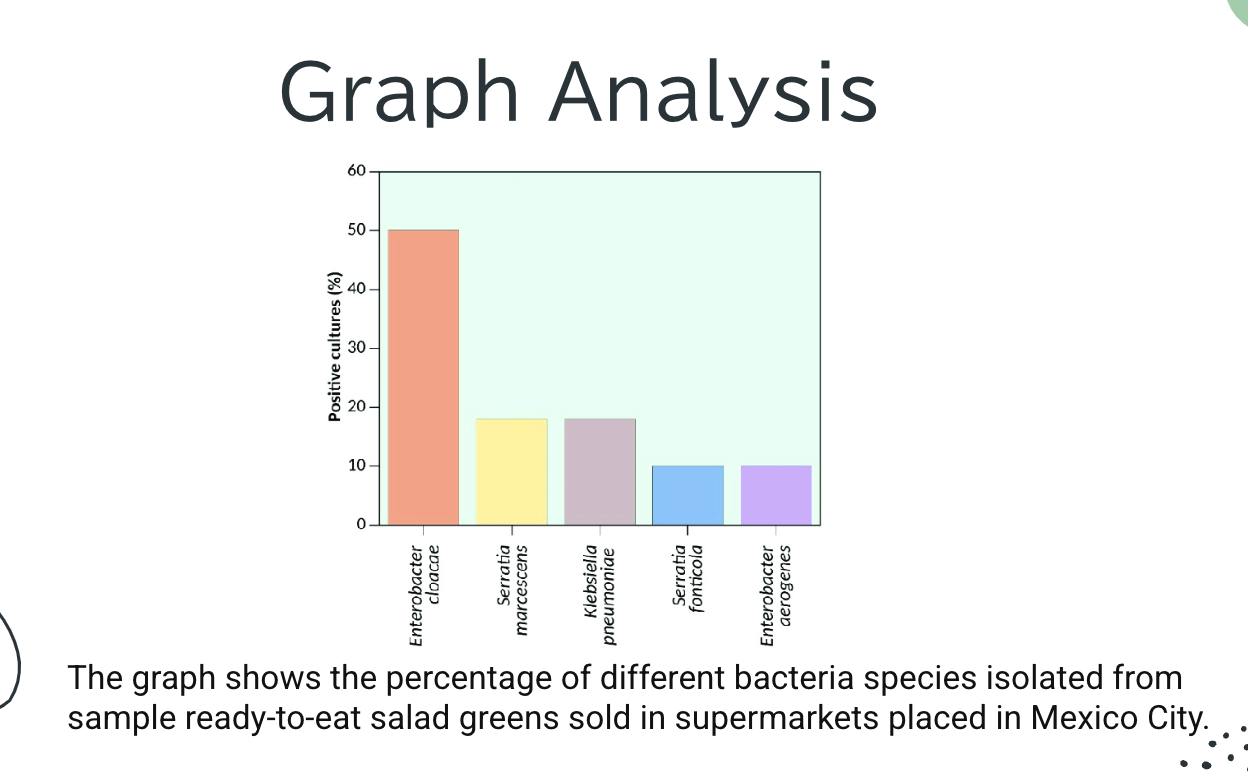
What kind of experiment is this?
Observational
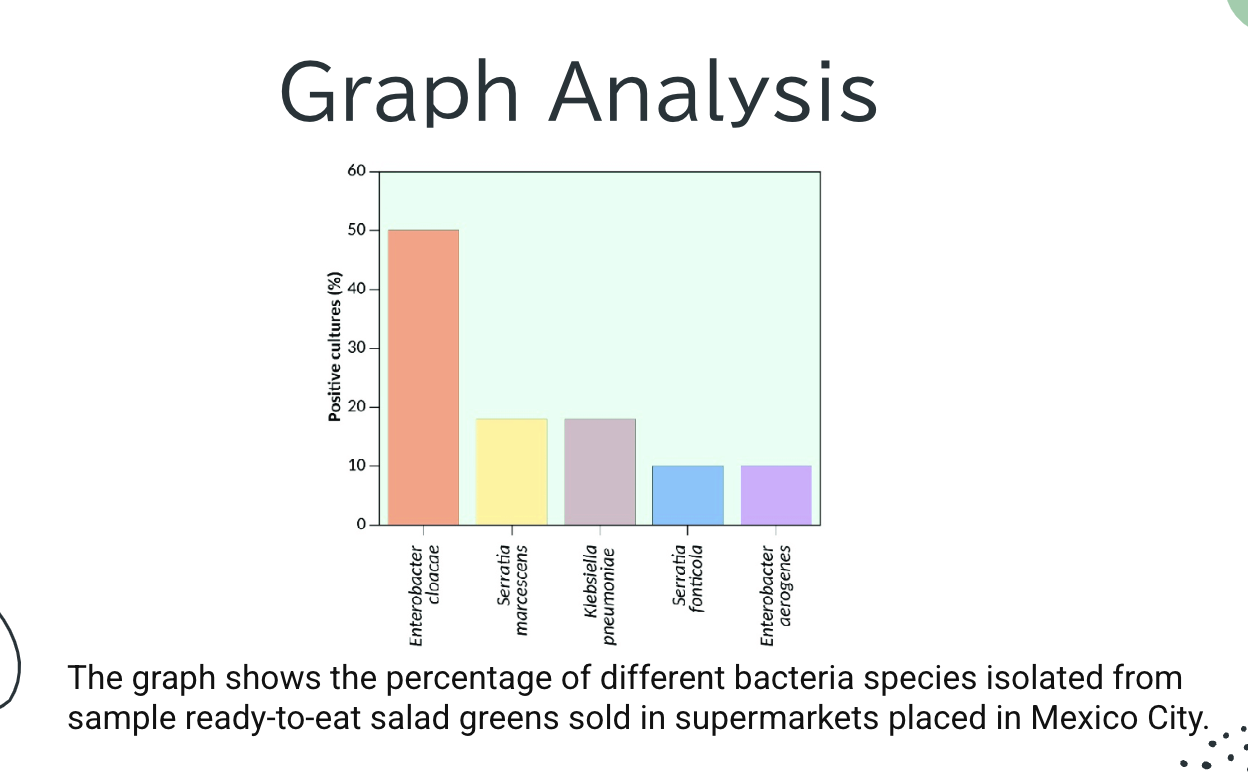
Standardized Varibale(s)?
ready to eat salad greens in supermarkets in Mexico
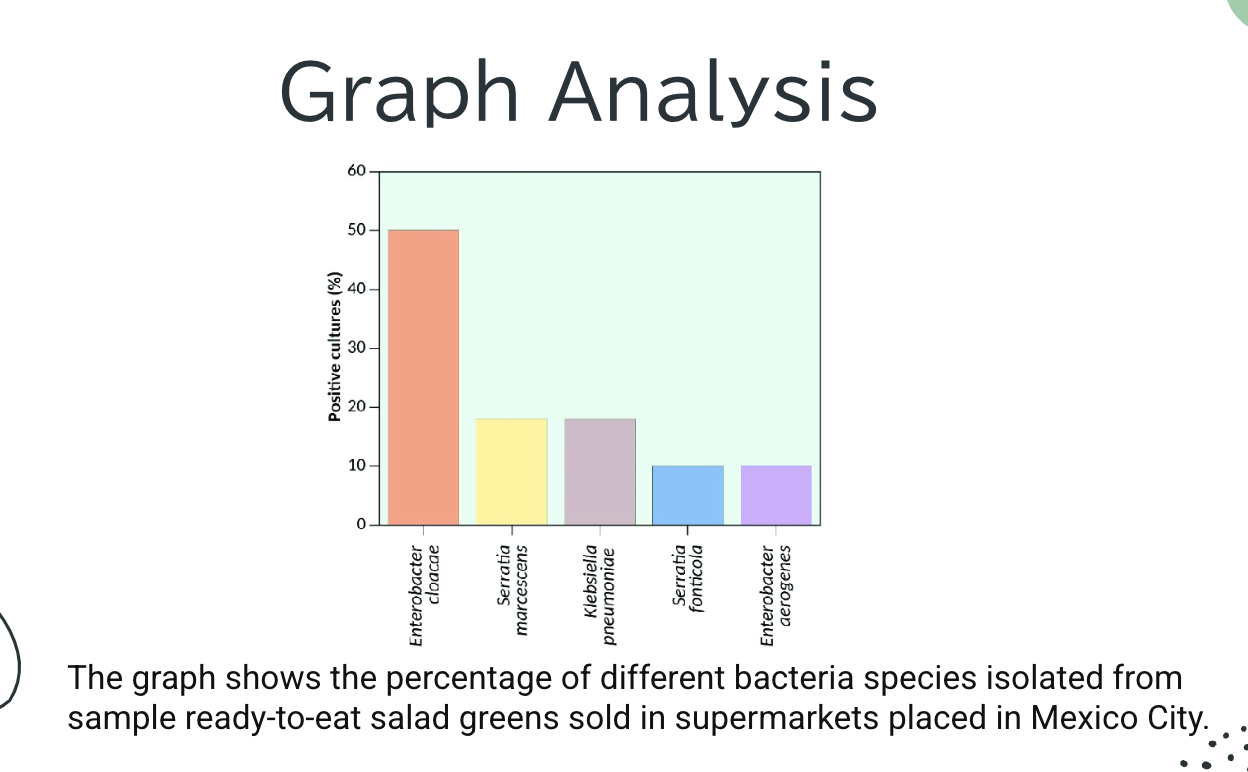
Dependent variable?
number of bacteria produced
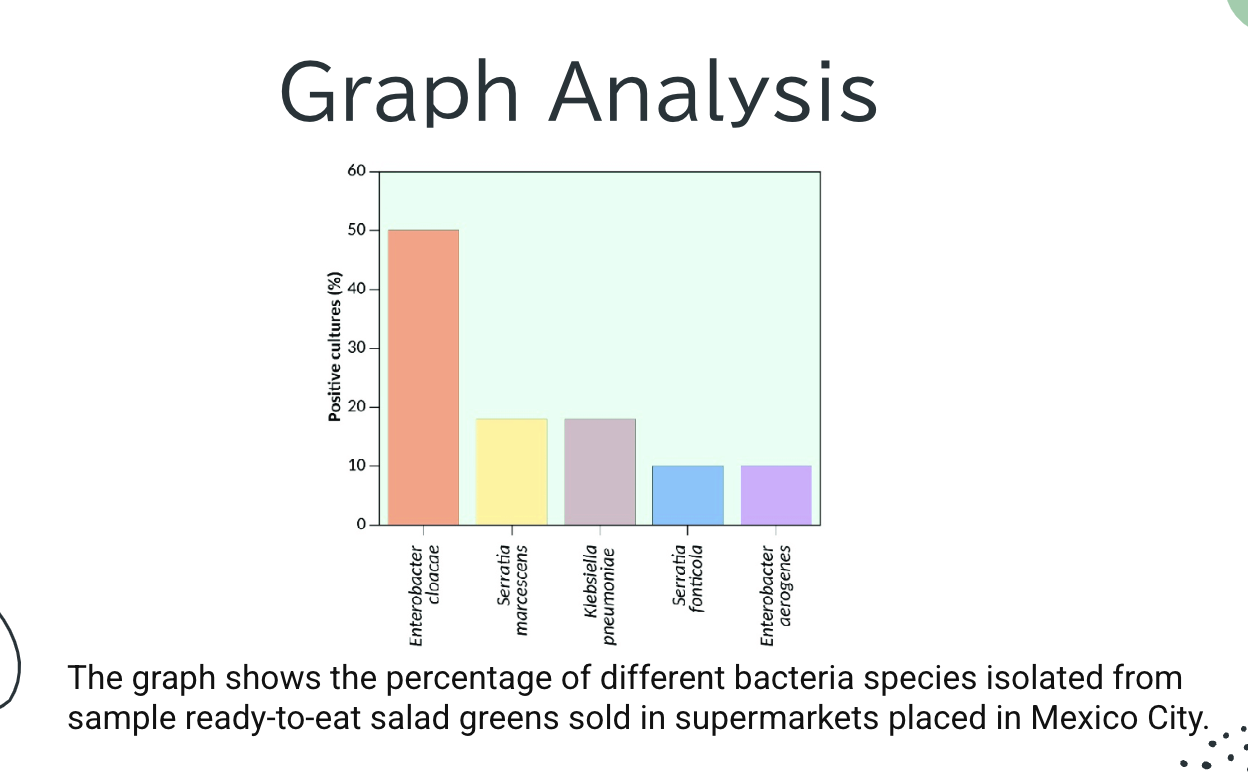
Independent variable?
none
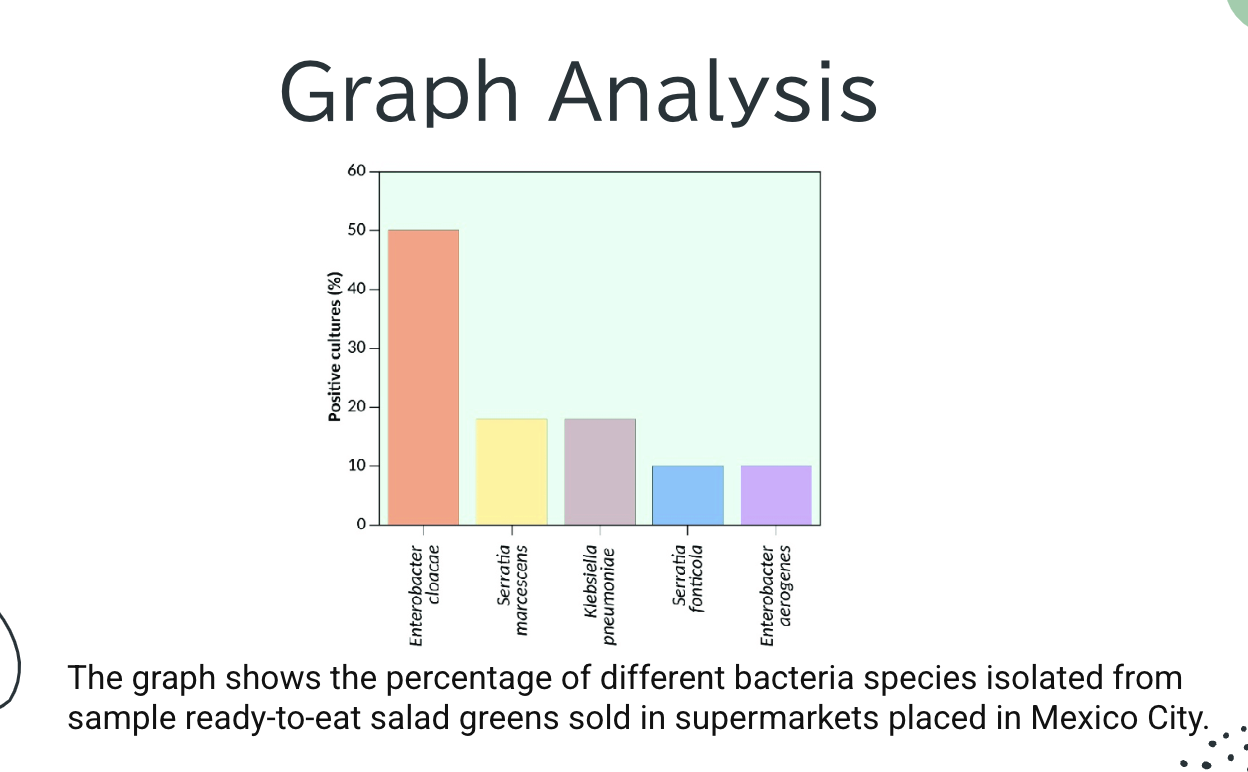
Control variable?
None